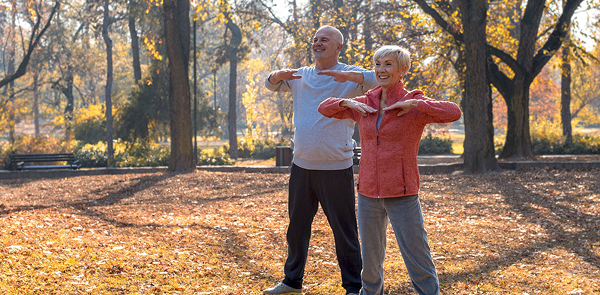
It’s no secret that exercise and brain health are closely connected. Regular physical activity has been linked to a reduced risk of cognitive decline and dementia and improved memory, attention, focus, and overall cognition (essentially the ability to think and learn).
A review in the Winter 2024 issue of Exercise Sport & Movement states that being physically inactive is as great a risk for dementia as genetics. The evidence also suggests that exercise may protect the brain in multiple ways, including improving blood flow, reducing inflammation, and promoting new nerve connections and pathways.
A study published on January 16, 2024, in the Journal of Alzheimer’s Disease adds another benefit: increased brain matter.
Yes, exercise might make your brain bigger!
This study included 10,125 healthy people between the ages of 18 to 97, with an average age of 53. The participants underwent whole-body MRI scans, looking at the brain from various angles.
Participants were also asked about their exercise habits. Researchers were especially interested in participants who regularly engaged in moderate to vigorous physical activity. They defined this as an activity that raises your heart rate and breathing for at least 10 continuous minutes.
What Did the Study Find?
Out of the total number of participants, 7,606 reported engaging in moderate-to-vigorous physical activity on average four days a week.
After adjusting for factors like age, sex, and BMI, they found that those who participated in more days of moderate to vigorous physical activity had larger brains. Specifically, they had more total gray and white matter, a larger hippocampus, and larger frontal, parietal, and occipital lobes.
According to the National Library of Medicine’s resource, StatPearls, gray matter is where the processing of learning, speech, cognition, sensation, and perception takes place; it’s also responsible for voluntary movement. White matter is a communication bridge between gray matter and the rest of the body. The hippocampus is responsible for memory, learning, and emotion.
“[Our study] represents a significant advancement in our understanding of how moderate to vigorous physical activity can positively affect brain volumes,” says Cyrus Raji, M.D., Ph.D., the study’s lead author. “With a substantial dataset of over 10,000 participants, this research underscores the potential neuroprotective effects of exercise, opening new avenues in preventing neurodegenerative diseases.”
Neurodegenerative diseases include dementia, Alzheimer’s disease and Parkinson’s disease, among others.
While the 2018 Physical Activity Guidelines for Americans’ recommendations include getting 150 minutes of moderate or 75 minutes of vigorous activity per week, this study suggests that the amount of exercise needed to increase brain volume is much less.
“Specifically, it demonstrates that even a low threshold of physical activity, as little as 25 minutes a week or 10 minutes a day for 2.5 days a week, correlates to larger brain volumes on high-resolution brain MRI scans in this population of adults throughout the life span,” explains Raji. “Given how difficult it can be to maintain physical activity regimens, this work suggests that the brain health benefits are attainable with levels of exercise much easier than previously thought.”
How Does This Apply to Real Life?
Every little bit of movement counts when it comes to protecting your brain. If you’re not a regular exerciser, just start where you are. Moderate-to-vigorous exercise is relative—what’s moderate intensity for one person may be vigorous for another. Can’t do 10 minutes all at once? Start with 2 or 5 or 7 minutes—just do what you can and work up to 10 minutes or more at a time.
What kind of exercise? Find something you enjoy and will stick to. Whether it’s more aerobic—like walking, cycling, or dancing—or something like strength training, yoga, or tai chi, it all has been shown to have benefits.
Certain foods have been shown to help improve brain health, including blueberries, green tea, walnuts, eggs, salmon, and leafy greens. Omega-3 fatty acids, found in foods like walnuts, salmon, other fatty fish, chia seeds, and flaxseeds, are also known to help protect the brain. Ditto for staying well-hydrated and engaging in activities like meditation, learning new hobbies, and getting plenty of sleep.
The Bottom Line
Just as with our overall health and disease prevention in other areas of the body, our brains are best protected when engaging in physical activity, nourishing our bodies with a variety of nutrient-dense foods, managing our stress, getting plenty of quality sleep, and maintaining healthy relationships. Including activities that challenge our brains, like learning a new skill, as well as those that bring calmness and help reduce stress, like meditation, can add further protection.
Craig Curtis, MD
Kimberly Salazar, MD
Sharon Morse Building
The Villages
http://www.craigcurtismd.com/

Why Join The VHA?
-
Communication
Bring YOUR voice to our community
-
Education
News and courses to enlighten and inform
-
Volunteering
Because we can't do our job without you!
-
Social Opportunities
Spend time with fellow residents and create friendships along the way
-
Philanthropy
Providing for those in need through our VHA Foundation and Helping Hands
Previous Article:

Health & Wellness









